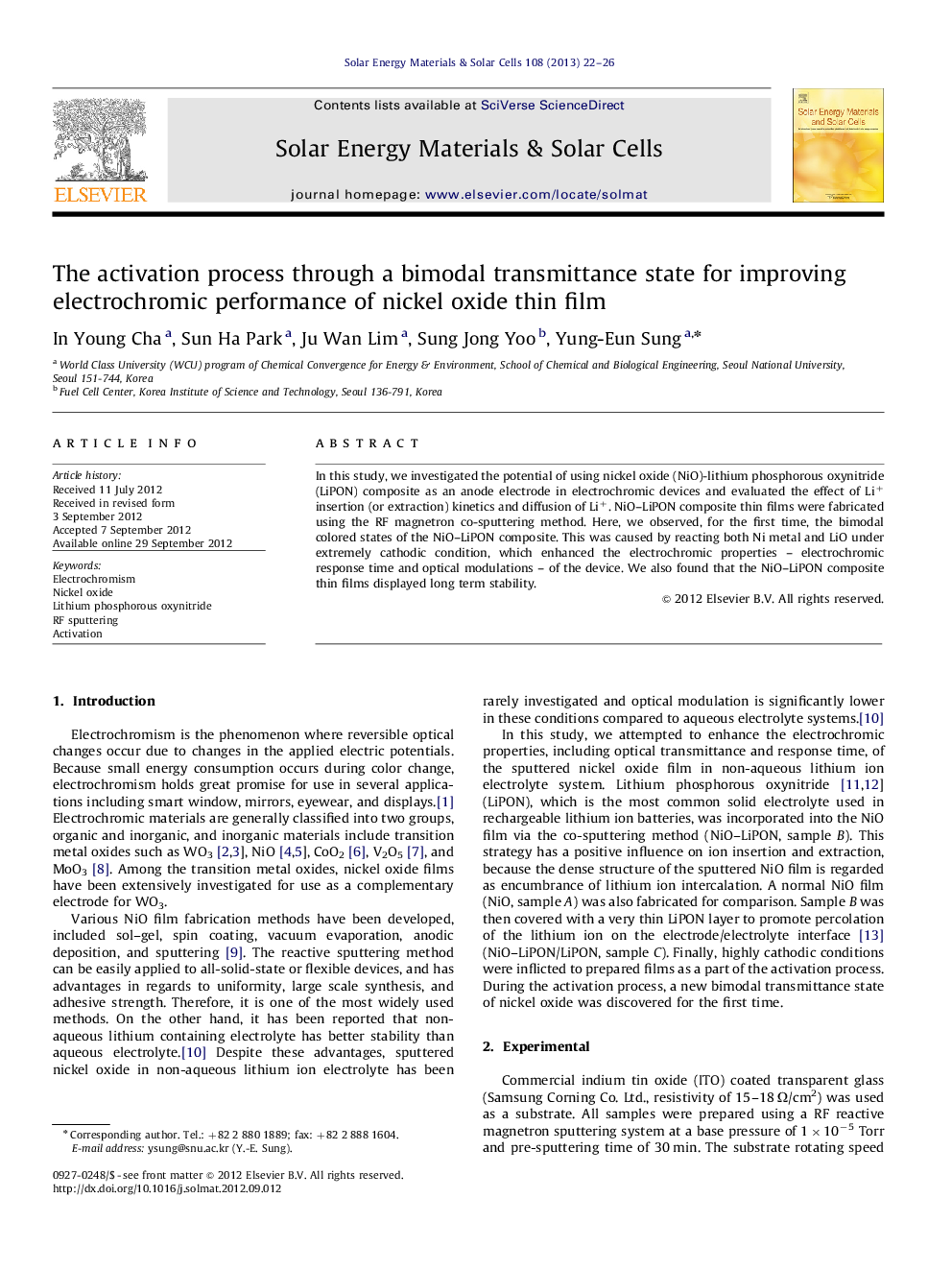| Article ID | Journal | Published Year | Pages | File Type |
|---|---|---|---|---|
| 78672 | Solar Energy Materials and Solar Cells | 2013 | 5 Pages |
In this study, we investigated the potential of using nickel oxide (NiO)-lithium phosphorous oxynitride (LiPON) composite as an anode electrode in electrochromic devices and evaluated the effect of Li+ insertion (or extraction) kinetics and diffusion of Li+. NiO–LiPON composite thin films were fabricated using the RF magnetron co-sputtering method. Here, we observed, for the first time, the bimodal colored states of the NiO–LiPON composite. This was caused by reacting both Ni metal and LiO under extremely cathodic condition, which enhanced the electrochromic properties – electrochromic response time and optical modulations – of the device. We also found that the NiO–LiPON composite thin films displayed long term stability.
► NiO–LiPON nano-composite film was fabricated via RF co-sputtering for elctrochromic anode material. ► During special activation process, which applies highly negative potential, bimodal colored state was observed. ► NiO–LiPON film showed superior electrochromic performance after activation. ► Activated NiO–LiPON film exhibited 50% transmittance change over 100 cycles. ► Co-sputtered LiPON component constructs lithium ion path.
